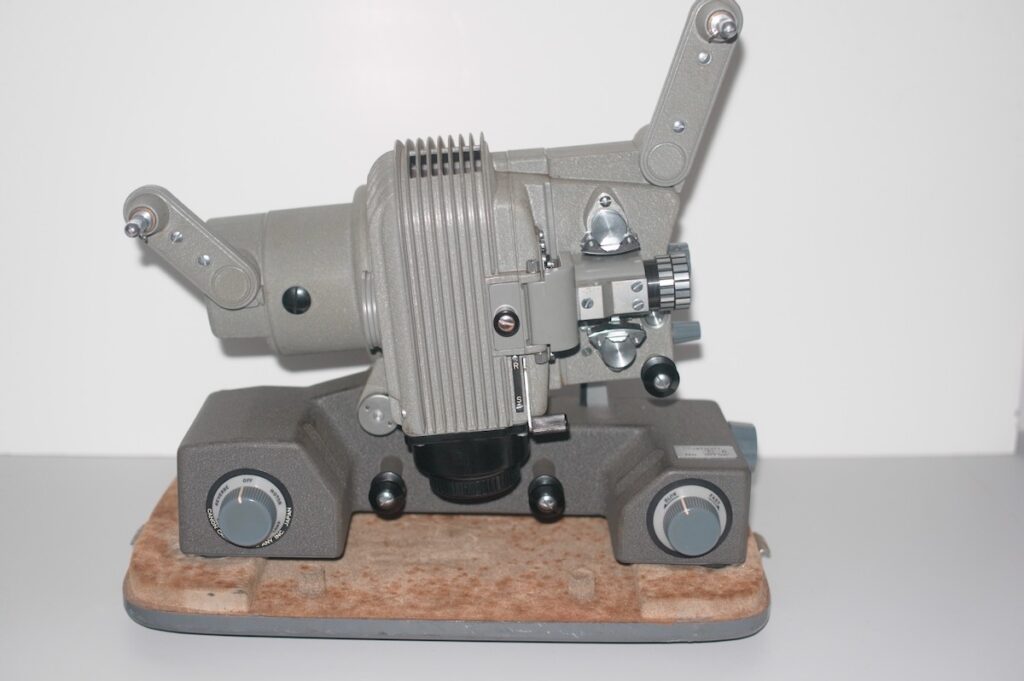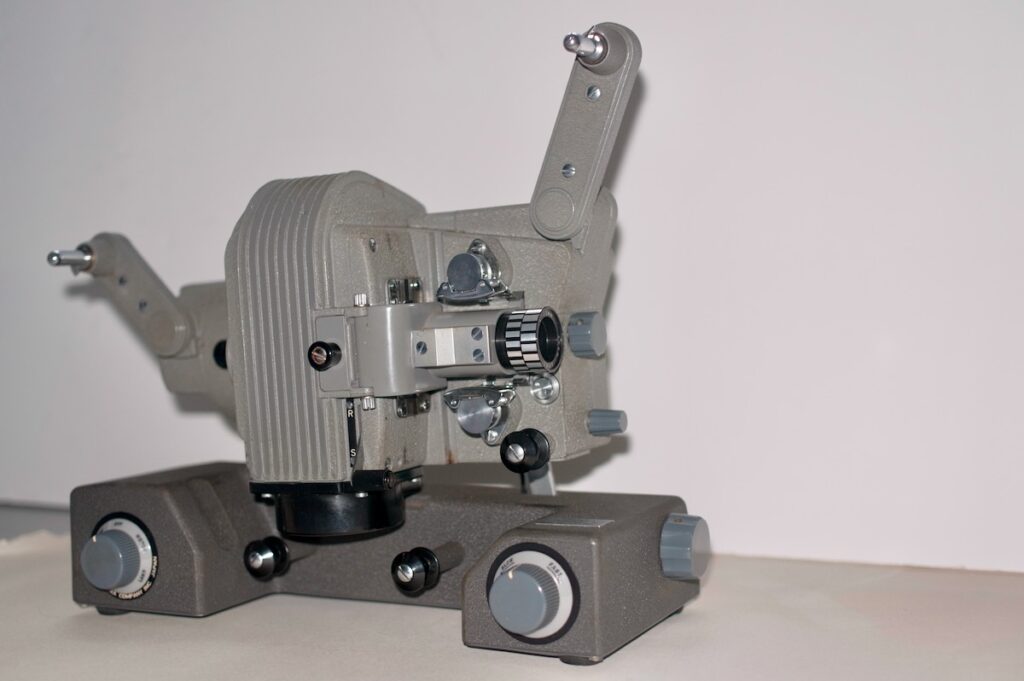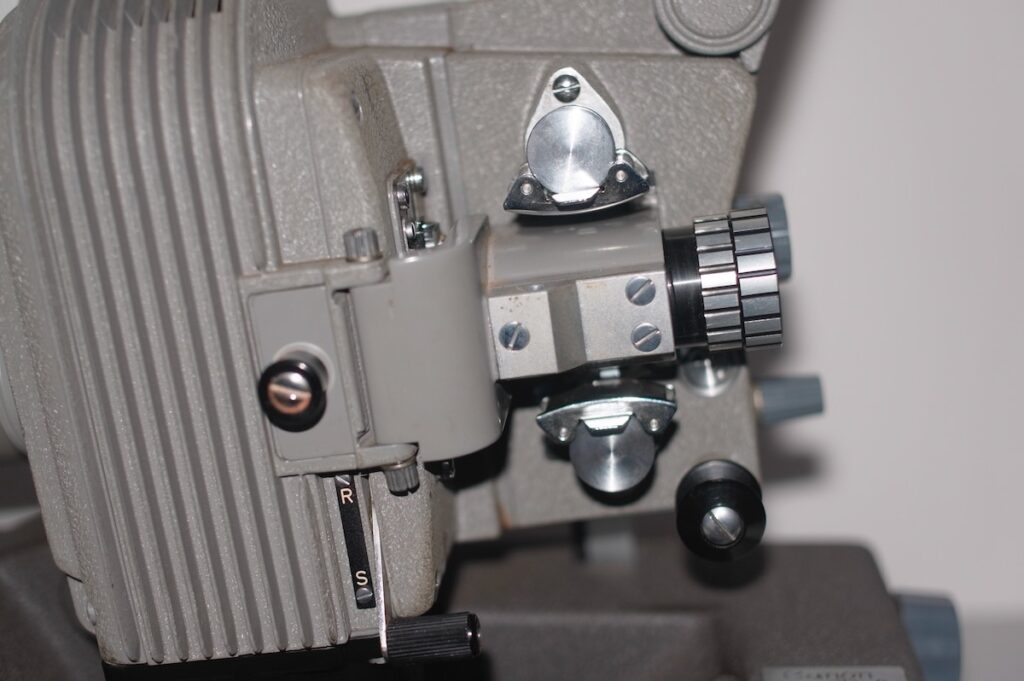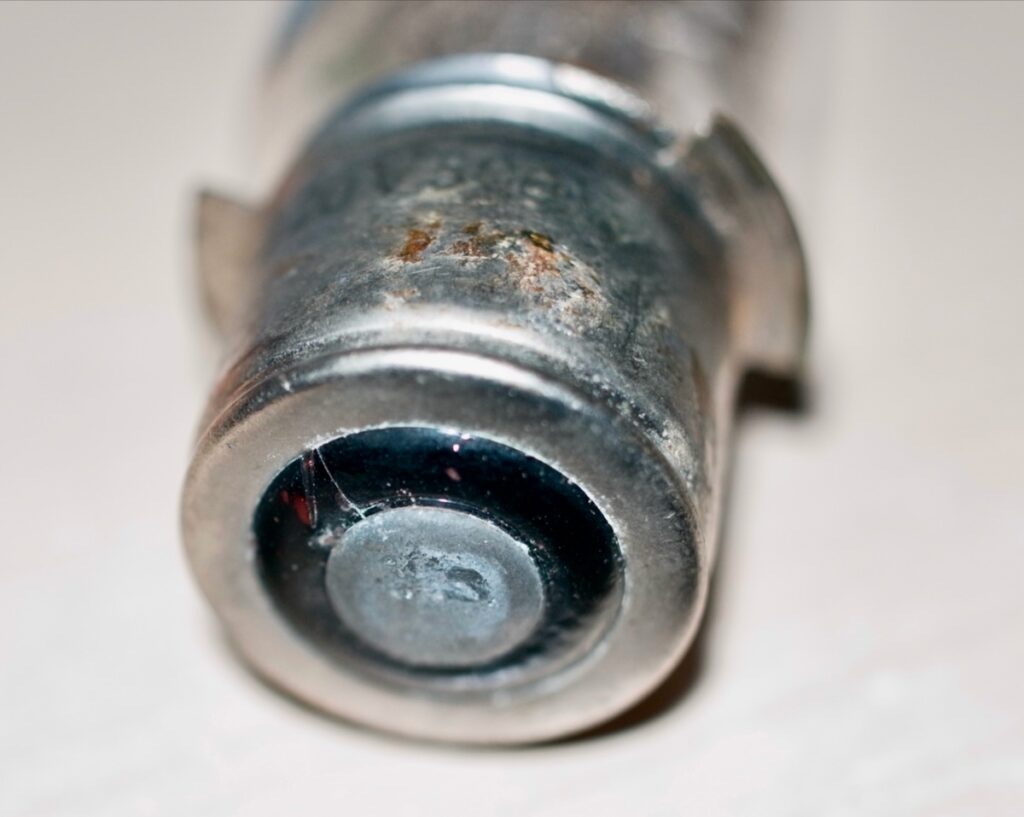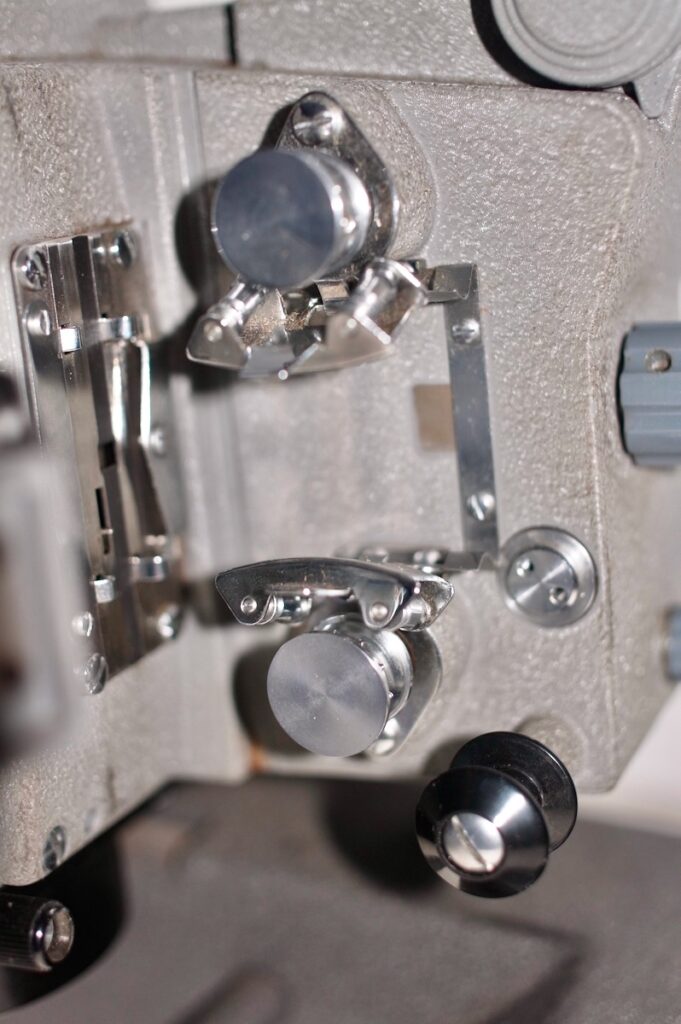The appealing Canon P8 – Canon’s first 8mm movie projector
The subject of this article is the first movie projector that the Canon company produced, the Canon P8 which was introduced in April 1958.
My Canon P8 projector
I bought my Canon P8 from eBay a couple of years ago and think I paid about £20 for it. I bought it because it has the look of an old projector which I know sounds silly – it is an old projector, but I mean it has the look of a vintage, 1950s, unsophisticated projector which I find quite appealing.
It became the first, and so far only, Canon projector in my small collection.
When the unit turned up I noticed a couple of things about it straight away. First the smell of oil – there seemed to be a lot of oil over the projection arms and the bottom of the case. There must have been an oil leak over the years because there was a lot to clean up.
The other thing I noticed when I moved the projector about was a distinct rattle. After a bit of investigation I found that the rattle came from the lamp which was rattling about inside the lamp housing. I tried to find out what was causing this but for a while it had me stumped. I could hear that the lamp was moving about but I couldn’t work out how to stop it, or even how to remove the lamp from the lamp housing.

There is a screw cap at the bottom of the lamp housing and it seemed logical that the lamp would come out of the housing when it was unscrewed, but that wasn’t happening. After a lot of head scratching and trying to find another part of the projector that could be removed to give access to the lamp housing I finally worked out what had happened.
The lamp has a bayonet style mount which is supposed to mate with a ring at the top of the lamp housing and then the bottom of the lamp housing screws in place to keep the lamp in place. What had happened was the lamp had pushed through the ring at the top and was rattling about inside the lamp holding with nothing to stop it. It was quite lucky that the lamp hadn’t broken.
In order to free it, I had to remove the lamp holder and wriggle the base of the lamp through it so I could pull it out. Once I’d done that I could place it carefully back in place and screw up the bottom connector to hold it in place, but each time the lamp just pushes through into the lamp holder again.
I suspect that there is probably a ring missing on my projector that fits in the lamp holder to reduce its size – alternatively, possibly the lamp fitted is not the correct one, and it should have one with a wider base.
Anyway, although I did once manage to get the projector running with the lamp working, each time after that has not worked.
Pictures of the Canon P8 cine projector
Description of the Canon P8 projector
As I said earlier the P8 was the first movie projector that Canon produced and it seems to be quite a rare object. A google search only reveals the page on the Canon site that deals with the Canon company history, and I couldn’t find any other example of a unit in anyone’s collection.
I did find an example on eBay which was from the US on sale for just over £2000 and another in Turkey for £600 which also suggests it is quite rare1.
In design the P8 is quite solidly built being of mostly grey, crackle painted steel. It was supplied in a protective steel box which fits over the top of the unit and is secured with two clamps, one on either side. When the top lid is removed the projector is sitting on the case base which can be left in place to use the projector if desired.
Operation of the P8
The Canon P8 8mm movie projector is very simple in its operation.
The film to be shown is fitted to the front projection arm, which folds up and out to accept the reel, and a take up spool is fitted to the rear arm which similarly folds out. The film then needs to be threaded through the top sprocket, looped round to pass through the film gate (the lens assembly can be hinged out to help with this) and then another loop is formed at the bottom before the film is threaded through the bottom sprocket.
Both sprockets have covers that snap up (or down) to allow the film to be placed onto the sprocket wheels and then locked shut.

When the film exits the bottom sprocket it’s fed along a path under the lamp housing, being supported by rollers until it is threaded through the take-up spool at the back.
With the film in place the switch on the back of the base can be turned on to either forward or reverse projection mode and then a further position to turn on the lamp. At this point everything is ready to project the film which is started when the clutch lever is moved up to the R (for run presumably) position.
When the clutch is set to run two actions take place – the motor is engaged with the film transport to start the film moving, and a shield between the lamp and the film gate is swung up out of the way so the light can pass through the film.
All that is left then is to set the film speed with the front control, and focus the image by twisting the lens. My example actually has a zoom lens, so as well as focusing the image, the image size can also be set.
The first thing I noticed when I projected a film with the Canon P8 was the noise – it’s absolutely deafening! I expect vintage projectors to make a noise because the very act of pulling the film through the projector is bound to make noise but the Canon P8 is exceptionally bad.
As well as the motor noise, there is an internal fan which is blowing air past the lamp to remove the heat. The Canon P8 is fitted with a 500W lamp, so there is a lot of heat being produced and I guess at the time it was normal for a projector to make that much noise. It would also have made film night quite a cosy affair!
Features of the Canon P8
I’ve already mentioned some of the features of the P8, but just to give a fuller picture I’ll go over the full feature set here.
One thing that would seem to point to the P8 being a reliable projector is that there doesn’t seem to be any drive belts used in the design. As far as I can see, the motor drives the film transport and the reels via direct drive through the clutch mechanism. That would remove a major source of reliability issues.
Behind the lamp is a removable mirror unit that reflects light emitted from the back of the lamp forwards. This mirror can be removed for cleaning purposes. In front of the lamp is a removable lens unit which focuses the light on the film and looks like it has a heat shield also built into the back of it.
There is a manual wind knob on the front of the projector to help with moving the film during threading, and on the front of the base is a knob which lowers and raises the projector body so the projected image can be moved up and down.
The lens fitted is a 15mm to 25mm f/1.5 zoom lens which I assume was made by Canon, although it doesn’t say Canon on it. The speed of the projector can be adjusted by the rheostat fitted to the front leg, and the document on the Canon site suggests it has a range of between 16 and 24 frames per second.
The Canon history site, linked to above has an interesting paragraph on the features of the P8.
The concept of the P-8 was: 1. Full specifications but compact body; 2. Easy operation; 3. Does not damage film; 4. Low power consumption but sufficient brightness; 5. Projection possible even when voltage falls; 6. Can be connected to a tape recorder. While satisfying the above specifications, a design portraying feelings of mechanical precision, solidity and beautiful configuration was realized.
I can see that 1, 2 & 4 are applicable taking into account the technology available at the time. I suspect 3 was hopeful rather than guaranteed but I’m not sure how 5 could be justified – how would the projector work without power? Possibly it is referring to fluctuations in mains voltage rather than complete failure.
Anyway the Canon P8 is interesting because it was the forerunner of the many different projectors that Canon made in later years.
- I’m not for a moment suggesting the projector is worth anything like that value! [↩]
Discover more from Everything Vintage
Subscribe to get the latest posts sent to your email.



